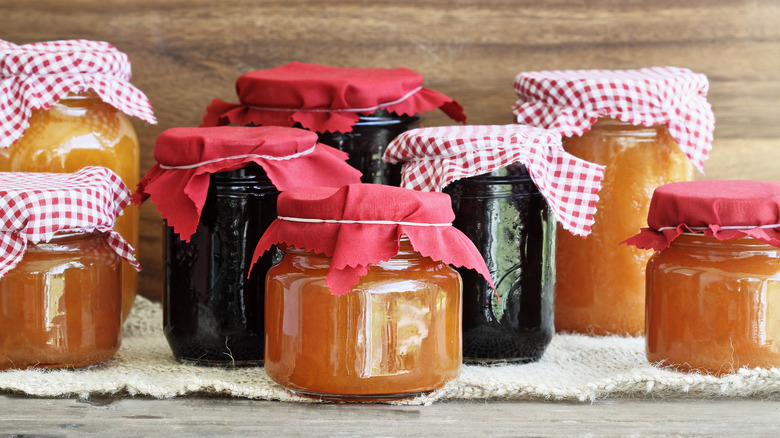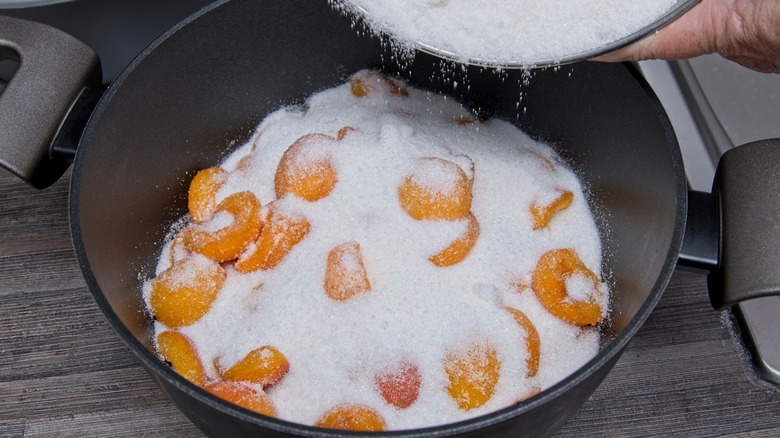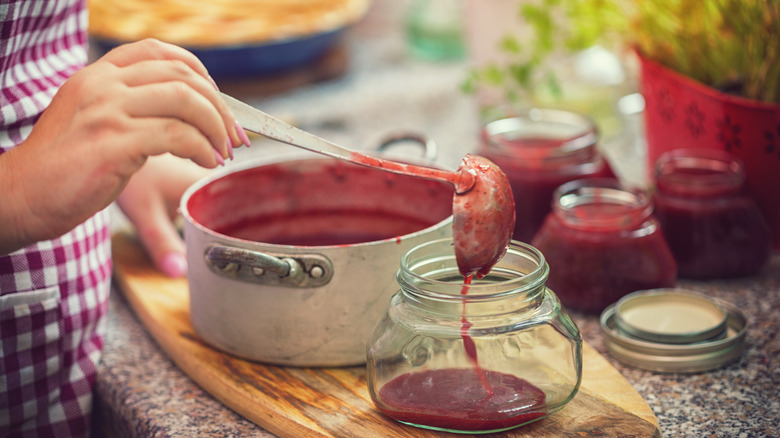The Essential Tip You Need To Give Homemade Jam The Perfect Texture
Fresh fruit is a natural treat, but when it's converted into a spreadable, sweet-tart jam, there's almost nothing it can't do. Whether slathered on toast, swirled into peanut butter and strawberry jam ice cream, or even paired with roasted chicken, a homemade jam is a singular treasure.
While the flavor of your fruit is no doubt a critical element of this creation, perhaps the most important quality in a jam is its texture. After all, a spread that's gritty, gloopy, clumpy, or gummy — or one that's simply not thick enough and lacks structure — can easily ruin the experience. Fortunately, there's one tip that will help keep you from getting jammed up with textural troubleshooting.
Believe it or not, sugar does a whole lot more than just make your jam delicious; one of its myriad functions in this process is also to create that perfectly gel-like, firm yet spoonable consistency. And choosing the right sweetener can make all the difference on that front, so be sure to reach for granulated sugar when preparing your fruity preserves.
Granulated sugar's jammy superpowers
Part of the reason granulated sugar is essential to the jam-making process is its ability to act as a preservative by preventing mold (thanks to the fact that a higher ratio of sugar means less moisture — the main culprit in spoilage, as it's necessary for microbes to grow). Given that part of the function of a jam is to extend the life of your fruit, granulated sugar an indispensable element.
When it comes to texture though, sugar's superpower is the way it interacts with two other main elements in your jam — acid (either naturally occurring in some fruits, or added to the recipe through an element like lemon juice), and the pectin inherent to many fruits. During the process, an acid first coaxes the pectin from your fruit as your jam is heated. From there, granulated sugar steps in, and its job is to snatch up that moisture, leaving pectin molecules to cling together, firm up, and gel.
The amount of sugar necessary will depend on how much pectin your produce already boasts, as some fruits have higher levels than others. It's possible to find specialized jam sugar, which comes infused with added pectin (and in some cases citric acid, too), which can help the process along, but if your ratio of sweetener is calibrated for your selected fruit and you have the appropriate amount of acid, standard granulated sugar will get the job done.
Sugar alternatives to jam-making
With this science in mind, it's easy to see why low- or no-sugar jams might be tricky to pull off, and can result in a runny or thin finished product. In fact, one of the top tips for homemade jams and jellies is to not mess with the sugar levels in a recipe, since they were likely created specifically for that particular fruit (or combination of fruits), and a natural pectin ratio.
If you have to sidestep the amount of sugar for any reason, you'll need to find alternatives to ensure you can achieve thickness in your jam. Seek out formulas that utilize alternative sweeteners and the gelling agents that are proven to work with them. You can create a satisfying jam with beet sugar, too. It's also possible to make a quick and easy jam using honey — just keep in mind that this will slightly alter the flavor profile of your finished product. Regardless of which recipe you choose, homemade jam is nothing short of sweet alchemy.


